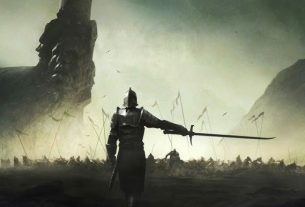Alauddin Khilji was one of India’s greatest kings and one of the world’s greatest military geniuses.
He was born in Delhi in 1266 AD (and hence an Indian; not a foreign invader) and ruled as Sultan of Delhi from 1296 AD – 1316 AD. Khilji greatly expanded the empire that he inherited from his uncle.
during his rule, the Mongols of the Chagatai Khanate invaded India. Khilji, by his military brilliance, managed to defeat the Mongols not once, but five times: in 1298 AD (led by Ulugh Khan, and inflicting 20,000 casualties on the Mongols), 1299 AD in Sindh (led by Zafar Khan), 1299 AD in Delhi (leading the army himself against the Mongols), 1305 AD (led by Malik Nayak, and inflicting 8000 casualties on the Mongols), and 1306 AD (led by Malik Kafur); and a “draw” in the sixth Mongol invasion of 1303 AD (again personally leading the army), where the Mongols were unable to defeat Khilji, but were able to sack Delhi.
This was a military feat unprecedented in those days, because the Mongols were an unstoppable force wherever else they went. No one in the rest of the world – whether the Russian Empire or the mighty Persian empire or the Baghdad Caliphate – could stand up to the dreaded Mongols. Khilji defeated them 5 times and had a draw in a 6th confrontation. The armies of the Delhi sultanate under Khilji were some of the most disciplined and well-trained in the world, and that is why they could defeat the Mongols time and again.
In 1303, Alau’d-Din Khalji built the city of Siri and, alongside, he also excavated a vast tank to provide water for his subjects. Originally named Hauzi-Ala’i, this is now called Hauz Khas. Half a century after Alau’d-Din built the tank, Firuz Shah Tughluq gained Delhi’s throne. Not only did he de-silt Hauz Khas, but he also erected several buildings along its eastern and southern banks. In the above photograph, you can see the ruins of Hauz Khas’s domes, which was taken in the years around 1908–09.
The tank that exists today was built by the Delhi Development Authority and, though pleasing and inhabited by a variety of waterfowl, bears little resemblance to the original.


